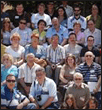A Brief History of the Places We Come From
El Pallars
A discussion of the Pallars, and more specifically, about the Pallars Sobirà, is appropriate since the first documented Boxaca or Boxica appears in Freixe, a small town in the Valley of Soriguera, within the valley of Sort, Pallars Sobirà, Catalonia, Spain.
The Pallars Jussà was probably the area inhabited earliest, judging from the discovery there of settlements from the Bronze Age.
The Pallars Sobirà was probably inhabited later on. Despite the cultural influence from the south, the refinement of its culture came from the north, from the south of Gallia. The Ibers hardly existed in those times.
In the centuries IV and III B.C. Pallars Sobirà was probably populated by the Lacetan. In the VII century A.D. the population had a strong Basque root, which settled in the vicinity of the Pyrenees. The toponimic of the towns is a clear evidence of this fact: Gerri, Esterri, Unarre, Isavarre, Escalarre, Lladorre, and so forth. Until the XI century, the language had its roots in the Basque language, which is relevant to the Basque influence in the etymology of our last name.
There is almost no trace of the Arab occupation that took place between 713 and 718 A.D. in the Alt Pallars. In the Pallars Jussà, there was a more important Arab influence.
Freixe
The uninhabited village of Freixe (1,411 m), at the headwaters of the river Castellàs, still had a population of 15 people in 1970. The village church, Sant Sadurní, lies partly in ruins.
The oldest Boxaca we have found is called Petri Boxaca. We have found two brothers and four children of this first Petri Boxaca (who in 1621 was already deceased). The fact that we find three early Boxaca brothers in Freixe leads us to believe that their father was already resident in that place. We will call him Xxxx Boxaca, and place his date of birth at around 1545.
Benet Solé Tomasó, who lives in Tarragona, being very fond of Freixe, spends the summers in his home there, the original Boxaca house, now renovated. In actual fact, Benet is the most Boxaca, Boxica, Pocha, Botxaca, Butxaca, Buxaca, Bochaca or Buchaca of all of us, because it is he who keeps up the house and the place of our origins.
Malmercat
To the west of Tornafort, high on the river Noguera Pallaresa, is the town of Malmercat (953 m). This area, early controlled by the Count of Pallars, was later the Viscountcy of Vilamur. A remarkable, well-known, elegant building is conserved as house of Macareno or castle of Bielsa; it has a chapel, without cult, dedicated to Santa Eulàlia. The parochial church of Sant Andreu of Malmercat, of Roman origin, has an apse trapezoidal covered with canyon vault. In 1991 there were 18 people living there, including the village proper and all the surrounding area (40 people in 1970 and 25 people in 1981).
Tornafort
The village of Tornafort (1309 m) is located on the northern slope of the mountain of Baén. Converging in the town is an old road that connects Malmercat and the valley of the Noguera Pallaresa with Puiforniu and Soriguera, and also provides a way to Freixe. The church of Santa Coloma depends on that of Malmercat. The building features arcades which open halfway up the interior and connect with the lateral chapels, forming a tribune at the level of the choir. Near the town there is, in ruins, a hermitage dedicated to Santa Maria. In 1991 Tornafort had 33 people (31 people in 1981 and 60 people in 1970).
Pere Joan Boxaca Xxxx, born in Freixe (± 1615), would be the first Boxaca that lived in Tornafort. No family remains living in Tornafort.
Gerri de la Sal
Gerri de la Sal is the seat of the municipality of Baix Pallars, in the district of Pallars Sobirà. It is located in the valley of the river Noguera Pallaresa, among the narrow passes of Arboló and Collegats. The pine groves and the groves are plentiful.
In the past, in addition to agriculture and the traditional ranching, the town's economy focused on the harvesting of salt. This was obtained by evaporation of the saltwater at the source of the Gerri.
The first Boxaca to establish residence in Gerri was Bonaventura Domingo Boxaca Povill, born in Tornafort in 1734. At the present time no member of the family resides in Gerri.
The monastery of Santa Maria de Gerri is located alongside the river Noguera Pallaresa. The origins go back a year 807 when under Sant Vicenc's invocation a monastic community began, to pass in 839 to Sant Benet's rule. It contributed to the evangelization of the Pallars after the Saracen domain.
In 1190 all their possessions passed to the direct protection of King Alfons I. It ended up being the richest monastery in the Bishopric of Urgell.
Gramuntill
A few kilometers from Pobla de Segur, on the road to Gerri, a side road takes us to the farm of Gramuntill. On the farm (near the main house) is the chapel of Sant Miquel.
This farm passed into the Buchaca family when Mariano Boxaca Povill, born in 1731 in Tornafort and brother of Bonaventura Domingo, married the heiress of Gramuntill, giving origin to the Bochaca of Tremp and some of the Pobla of Segur. Although no Boxaca still live here, descendants of Mariano maintain the property.
Taús
Taús is a village in Valls d’Aguilar, in the region of l’Alt Urgell. At one time Taús had as many as 60 houses, but there are only five houses in regular use today. No one from our family remains in this village.
One of the sons of Josep Boxaca of Tornafort and Margarida Povill was Isidre Boxaca Povill (1724-?) who married Maria Coromines, of Taús.
Vilamur
Vilamur, at 1264m above sea level, belongs to the municipality of Soriguera, in the middle of Pallars Sobirà. It has less than 60 inhabitants. A principal feature is the castle of Vilamur, once the headquarters of the viscounty of Vilamur.
The first Boxaca whom we find in the Cortal family of Vilamur is Pere Joan Boxaca, born in approximately 1710, but who already had two brothers who had been born in Vilamur. This means that he was not the first Boxaca of Vilamur. Almost certainly, one of his ancestors had come down from Freixe, and it is possible that he had a home in both villages, as the Cortal family already existed in Freixe at that time. No family remains living in Vilamur.
Penelles
Penelles is located in the region of the Noguera, near the border of the region of l’Urgell. It forms part of the plain watered by the channel d’Urgell. It boasts a current population of some 525 inhabitants.
Of the children born of the marriage between Joseph Boxaca (1690) of Tornafort and Margarida Povill of Llagunes, Agustí Botxaca Povill (1724) is the second-born. We find Agustí Botxaca Povill in Penelles (la Noguera), where he married Theresa Vilaltella Mingot.
We will find descendants from Penelles in Almenar, Menàrguens, and Pergamino (Argentina).
José Mª Buchaca y Freire’s father, Manuel Magín Buchaca Las Casas, could very well have been the son of Francisco Boxaca Povill, born in Tornafort in 1729. The fact that Francisco disappeared from Tornafort, then appeared in Ventoses (near Penelles) in 1758 and is then never heard of again; that his name is the same as that of one of the erotic poet’s brothers; that he has a brother called Manuel, the same name as the poet’s father, and that the ages coincide; all support our suppositions.
Present-day family descendants of Agustí Botxaca Povill still live in this location.
Valldarques
Valldarques on Alt Urgell, is already mentioned in the Act of Consecration of the Cathedral of la Seu d’Urgell in the year 839AD, under the name ARCHAS.
The rural area of Valldarques contains the basin of the stream of the same name which has its source a little above the fountain of el Cebre. It is demarcated by the mountain range of la Creu and the plain of Tolustre, the mountain range of Arques and la Torre del Duc, on the right, and from the west to the sunrise, and on the left by the hill of Prat Sobirà and the wood of Sallent.
Once we reach the kilometer reference point 26.4 on the road from Isona to Coll de Nargó, we find the castle-home of the Vilars, called “Vilas”, with Sant Miquel’s chapel near the farmhouse. The chapel has one small, rustic nave, which has a smooth apse. In the past, the procession for Saint Michael would take place in the surrounding area.
One marvels at the church of Sant Romà, which is a beautiful Romanesque temple of one nave, with an archivolt apse, a square bell tower, three floors separated by curvatures, on the first of which there are two small openings; on the second there are geminated windows and on the third there are two portholes and the remains of paint on the northern façade of the belltower.
The first Buchaca on record who appears in Valldarques is Simó Buitxaca, who in 1698 was the godfather of his grandson, Joan Simó en Sallent. This date would place the birth of Simó Buitxaca at about 1650. He married Mariàngela Vilella, of Gavarra, and was the owner of the Buchaca home in Valldarques. We must suppose that his father would have been born some 25 years previously and that he was already an inhabitant of Valldarques.
Most members of our family whose surname uses the form of Buchaca arose from Valldarques. Now, no Buchaca remains living in Valldarques.

Arrels
‘The Book of a Family’ is the detailed, informative account of our family's past, present and future.

Reunions
People from all over the globe gather to celebrate their one common connection - a family name.